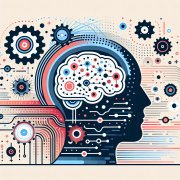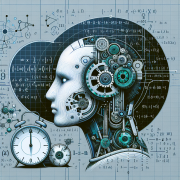Artificial Intelligence vs…
Artificial Intelligence vs. Machine Learning: Understanding Their Interconnected Roles
Artificial Intelligence (AI) and Machine Learning (ML) are often mentioned together, leading to confusion about whether they represent the same concepts or serve distinct roles. The reality is that while these terms get interchanged, they are not equivalent. Each serves its own purpose. In previous discussions, such as my article on [Understanding the Distinctions Between Artificial Intelligence and Machine Learning](https://www.davidmaiolo.com/2024/09/20/understanding-differences-artificial-intelligence-vs-machine-learning/), I’ve explored their differences—let’s dive further into the heart of this topic.
### Defining Artificial Intelligence
At its core, AI aims to replicate or exceed human intelligence. This idea is expansive since it doesn’t just include reasoning but discovering information, making inferences, and applying those deductions in various tasks. AI seeks to perform actions that require human-like intelligence, whether it’s recognizing patterns, understanding speech, or navigating challenges such as self-driving cars, which I’ve previously explored in [The Future of Self-Driving Cars and AI Integration](https://www.davidmaiolo.com/2024/09/20/future-of-self-driving-cars-ai-integration/).
Exceeding human capabilities doesn’t solely mean handling massive datasets as machines typically do better than humans. It also involves aspects of human intuition: reasoning, speech comprehension, recognition, and even motor skills—the ability to tie shoes or adjust to a changing landscape.
### What Is Machine Learning?
Machine Learning is a subset of AI, but while AI might aim at general intelligence or replicating human models of interaction, ML has a narrower focus: it learns from data. Machine learning’s objectives revolve around making predictions, decisions, and classifications based on statistical analysis. Unlike traditional programming, where tasks are explicitly coded, ML allows models to evolve autonomously as they are fed vast datasets.
The ability to make decisions based on data, without human intervention during most phases of the learning process, shows why machine learning is such a groundbreaking capability. Essentially, it forms the backbone of many AI systems today—from chatbots to recommendation systems to anomaly detection models that have been highlighted in past writings, such as in [The Art of Debugging Machine Learning Algorithms](https://www.davidmaiolo.com/2024/09/20/debugging-machine-learning-algorithms-insights-practices/).
### The Connection Between AI and ML
Think of AI as a larger conceptual framework with machine learning being just one important part. AI encompasses more than just ML—it includes disciplines like robotics, natural language processing (NLP), and computer vision. In many cases, systems that employ AI combine several approaches to achieve “intelligent” behavior.
For instance, NLP, commonly seen in digital assistants like Amazon’s Alexa or Apple’s Siri, pushes beyond machine learning, involving deep semantic understanding, knowledge graphs, and reasoning capabilities. This field also connects AI to practical tasks, enabling systems to understand and respond to spoken language (human speech comprehension) in a meaningful way.
Yet, as powerful as these innovations are, they aren’t independent from machine learning. ML frequently underpins their ability to adapt and improve.
### Deep Learning: A Subset of Machine Learning
One area stands out within the realm of ML—Deep Learning (DL). Deep learning uses neural networks, an architectural design that mimics how the human brain works, allowing systems to ‘think’ in multi-layered structures and derive more profound insights. These systems, while data-heavy and intensive, are especially successful in handling complex issues like image recognition or autonomous driving.
One characteristic that distinguishes deep learning is its tendency to operate with less need for human intervention—particularly in unsupervised learning models. In these situations, the system uncovers insights from raw data without explicitly programmed labels.
This can bring both breakthrough findings, yet pose challenges, specifically in interpretability. Oftentimes, deep learning’s “black-box” nature makes it hard to trace how a system arrived at a specific conclusion, creating possible risks in fields where interpretability is vital, such as healthcare or finance.
### Practical AI Applications Beyond Machine Learning
It’s important to note that not all AI systems depend solely on ML or DL. Take robotics as an example—AI-driven robots involve sensory perception, calculation, motor functions, and decision-making mechanisms. Motion and physical interaction, such as robots that can autonomously navigate or assist humans in real-world tasks, rely on numerous AI techniques beyond data analysis.
Similarly, consider vision in AI—this doesn’t just mean recognizing faces but encompasses systems that can make contextual decisions based on images, from medical pattern recognition to autonomous navigation. These technologies combine vision techniques derived from AI and sophisticated ML algorithms, making them more adept at handling various real-world scenarios.
### AI’s Growing Role in Everyday Life
From personal assistants to healthcare predictive models, AI systems influence more aspects of our daily lives than we tend to acknowledge. However, parsing the exact moment when machine learning gives way to broader AI capabilities can sometimes blur the lines of understanding.
Where my professional experience in AI consulting at DBGM Consulting, Inc., comes into play often is guiding organizations in AI and ML adoption. Clients frequently require demystification on how machine learning solutions can integrate within existing systems or enhance workflows. It’s not uncommon for businesses to start with an expectation of full AI but realize that a well-implemented machine learning model delivers what they need initially. As they progress, they begin adding layers of advanced AI components.
### The Relationship of Trust and AI Decision Making
A continually pressing issue within AI is trust. When AI systems make decisions based on machine learning algorithms, particularly with deep learning’s black-box nature, how do we trust the outcomes? This is a critical question, especially given the increasingly autonomous nature of these technologies in areas like finance or healthcare.
Involving human oversight in the loop of AI decision-making is one approach to balancing rapid innovation with ethical responsibility. This aligns with my cautious optimism about AI’s place in society. AI, while offering immense promise, demands robust frameworks for accountability and transparency.
### Conclusion
Artificial Intelligence and Machine Learning are two intertwined, yet distinct, fields that offer complementary advantages. AI encapsulates a broader ambition—mimicking human intelligence—while ML hones in on specialized data-driven processes. Understanding this distinction, yet seeing them as interconnected disciplines can help us better harness their full potential.
As AI continues to evolve, deep learning will push the boundaries, NLP and vision will enhance human-technology interaction, while applications in everything from robotics to healthcare will see rapid advancements. Whether it’s automating tasks or finding new insights in vast datasets, the potential AI and ML offer remains boundless and promising—if developed responsibly.
By better understanding their interconnected roles, we can shape this ongoing technological revolution to serve both society’s needs and ethical boundaries.









Thank you. Nice article!
Just posted! What are your thoughts?